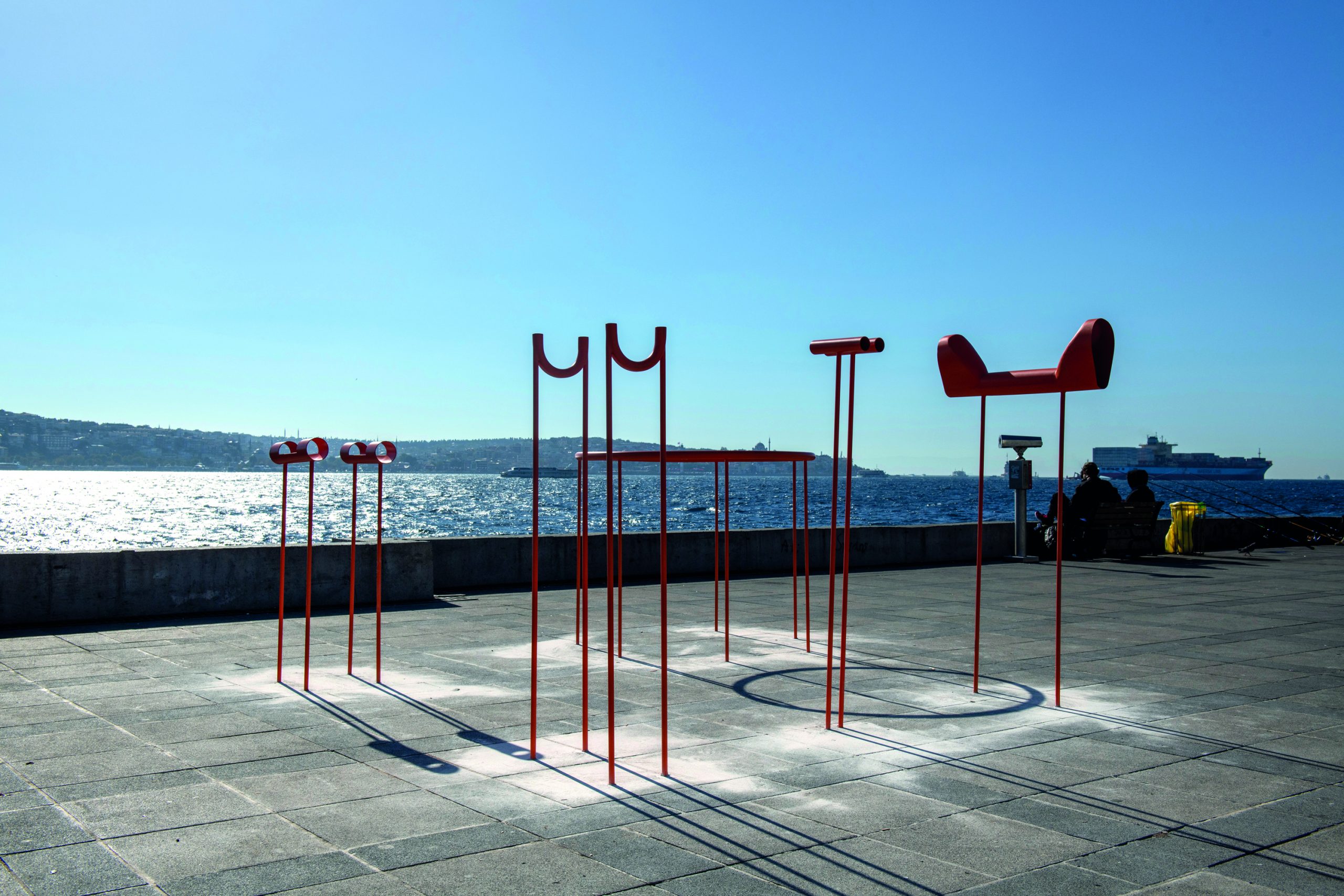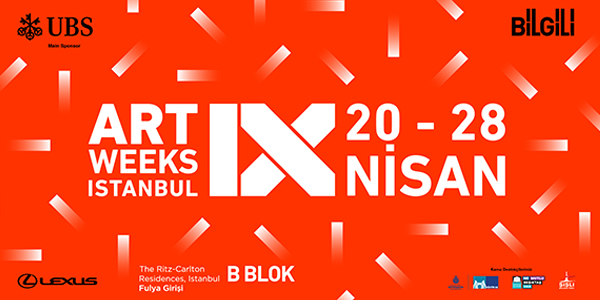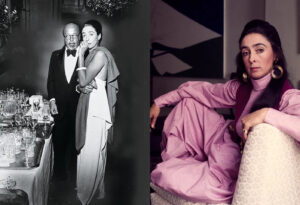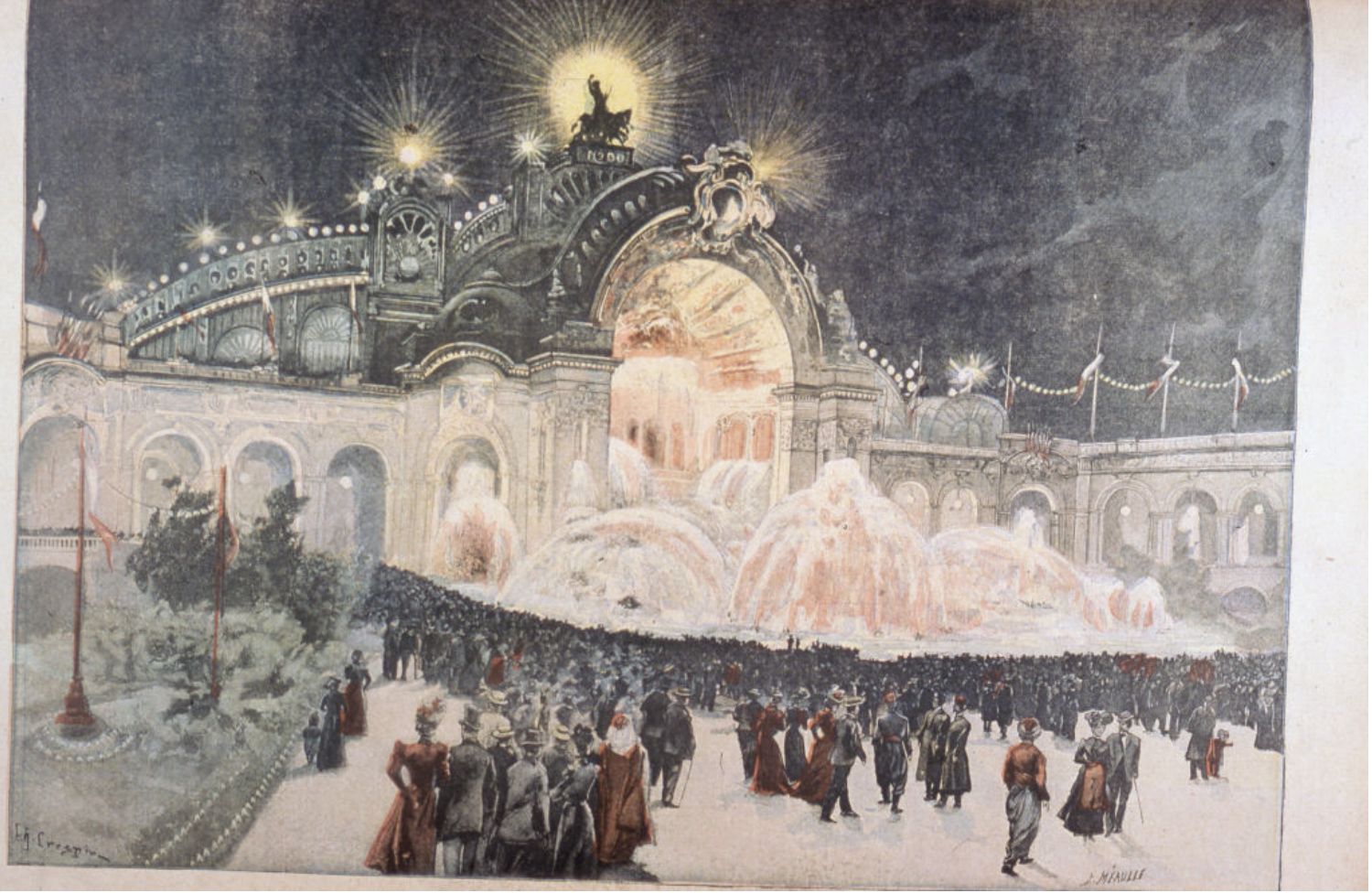We owe the things we noticed, rethought and faced this year to an awareness gained through the global pandemic crisis. We have faced the consequences of our choices and decisions. We have learned what we cannot give up, what we make, produce and consume. Meanwhile, the no longer negligible existence of the massive environment outside of us that consists of human and non-human systems has shown us that we are not alone. It is debatable whether it was good for us to see this. On on the contrary, it may have made us all feel guilty; individually and in the context of the evolutionary process.
Over time, different reactions emerged individually, socially, and professionally. We will see together what these responses become, whether they are long term or permanent, after a certain level of maturity.
Somewhere Between Speculation and Solution
The world of architecture and design has again sparked discussions with the rational solutions it has delivered, as well as speculations caused by certain projects. This time, of course, the pandemic was the center of discussion. Hygiene, mask use and social distancing rules, which are naturally and necessarily integrated with the epidemic, became a new frontier for applied design and architecture. While some of the projects presented a rational and practical approach in terms of functionality, some of them were on the compelling and speculative side.
“Meanwhile, global fashion and textile brands commissioned their own teams and production units for fast and high-volume mask production.”
One of the fields that quickly adapted to this process was the fashion industry. A jacket produced by the clothing brand Vollebak, known as the ‘Full Metal Jacket’, used copper, a material shown to kill viruses such as COVID-19 after a few hours of contact. It was among the more speculative designs.
Although some claimed that the germ protection feature would rapidly transfer to the clothing industry with this super-expensive product, the question of how broadly it would be taken up posed a thought-provoking discussion in terms of equal opportunities. Meanwhile, global fashion and textile brands commissioned their own teams and production units for fast and high-volume mask production. The first initiatives came from fashion designers Aslı Filinta and Zeynep Tosun in Turkey. In an interview about working during the pandemic, bio-designer Ece Gözen, who conducts innovative studies in the field of textile, shared studies gathered under the umbrella of biotechnology on alternative materials based on long-term observations in the fashion industry. Gözen stated that they could make a massive difference and provide rewarding results in times to come. (source: Vbenzeri.com)
Plot Twist
One project that made its mark in the sense of a “plot twist” this year was the exhibition, Countryside, The Future at the Guggenheim Museum. Visitors were welcomed into the museum entrance by a huge tractor and a cabin for growing tomatoes, lit pink. In a special interview with ArtDog Istanbul in April, exhibition co-organizer Samir Bantal, the director of the research unit AMO of Koolhaas’ OMA (Office of Metropolitan Architecture made the following statements on the exhibition’s content along with his co-organizer, architect Rem Koolhaas: “Today, our inability to find an interface through which to relate to nature is also what the Coronavirus has showed us: We lost touch with nature. We don’t know how to deal with the boundaries between city and nature. This raises the question of how to interact with what we call the wild today. For this, we first need to redefine our relationship with it.” These statements seem to have become even more meaningful within the course of the pandemic.
For the Ambiguous Standards Institute (ASI), one of the most striking projects among Turkey’s plot-twisters, 2020 has been an exciting year. Studies of the Ambiguous Standards Institute were carried out by lecturers Cansu Cürgen, from Istanbul Bilgi University’s Architecture Department, and Dr. Avşar Gürpınar of the Industrial Design Department of the same university, alongside other institution members. The vision of the institute is “to trace the roots of ambiguous standards in a given context, aiming for the accumulation of information and the local, national and global dissemination thereof. The institute pursues a delicate investigation of textual and visual representations of various exo-standard measurements, and takes them into the record.”
“We lost touch with nature. We don’t know how to deal with the boundaries between city and nature. This raises the question of how to interact with what we call the wild today. For this, we first need to redefine our relationship with it.”
The first comprehensive output of the institute’s studies was an exhibition that took place at the 4th Istanbul Design Biennial in 2018. This exhibition aimed to open a discussion through objects, images and texts, in reference to topics such as food, unicodification, tunes, and electricity. The project was subsequently displayed at various exhibitions in France, Belgium and Israel. This year, the third edition of the Franke/Herro Design Series, organized by The Art Institute of Chicago, has been described as “an institute within an institute,” an exhibition of the Ambiguous Standards Institute. The opening, which was delayed due to the pandemic, took place on November 21st. In this first solo exhibition, a total of 10 case studies were presented on the subjects of protest, travel, and health, in addition to previous research. “The exhibition audience is invited to consider the implications and shortcomings of our standardized world as it profoundly shapes our lived experiences, the organizers wrote.”
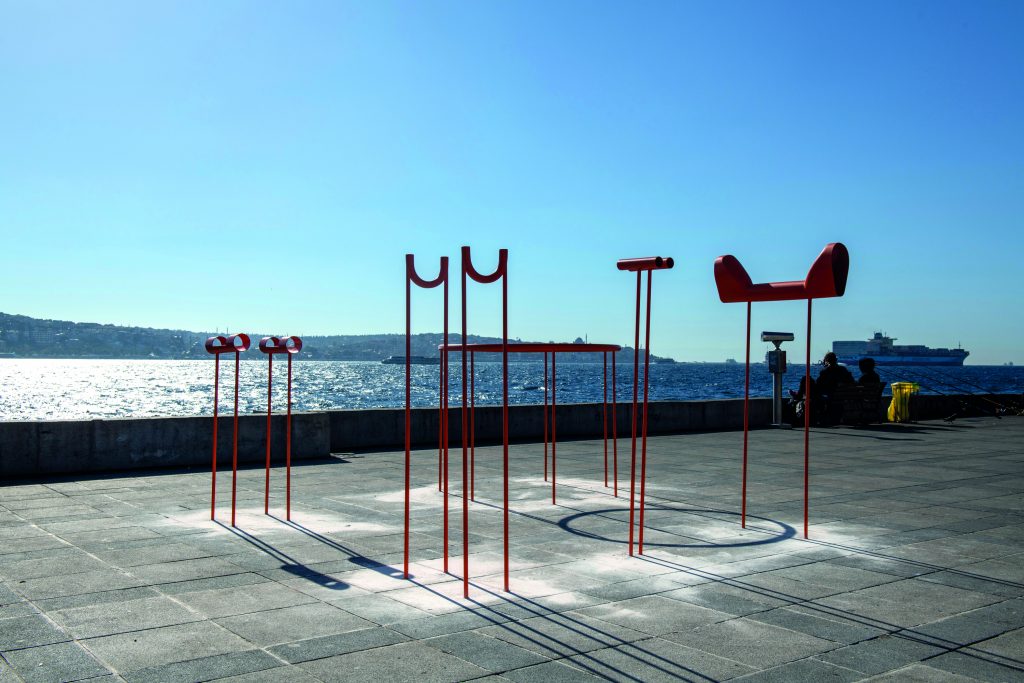
Photo: Kayhan Kaygusuz
The Need for Dialogue
Another instance that made its mark this year were the events and meetings that couldn’t be carried out due to the pandemic. In the meantime, design and architecture organizations sought to discover new ways to enrich and transform the ground of dialogue and discussion. Among the remarkable events of the year that brought the international design and architecture community together in digital formats were the Virtual Design Festival (April 15–June 30), the Maison & Objet ‘Digital Fair’ (September 4–18), and the program titled Open?, at the Pavilion of Russian Federation at the 17th International Architecture Exhibition in Venice Biennale (postponed until May 2021). In addition, the broadcast of the Design Emergency platform, co-founded by MoMA’s Architecture and Design Curator and Research and Development Director Paola Antonelli and design critic and writer Alice Rawsthorn, continues to gain traction. With a focus on pandemics and emergency design, the effort draws on the contributions of important actors from across the design and architecture related fields. The Istanbul Design Biennial also participated in the digital dialogues of creative industries. The biennial presented a podcast series called ‘Design Biennial Talks,’ sponsored by VitrA. The first part of the program, published on June 17 under the title ‘Design Biennial Revisited’, was moderated by the people who have worked in the biennial team at different times. It included participants and curators of the previous editions; Zoe Ryan, Prem Krishnamurthy, Superpool, Orkan Telhan, Judith Seng, Camilo Oliveira, Murat Güvenç, Deniz Manisalı and Emre Arolat among them. The program provides an opportunity to evaluate the changes to the design and architecture agenda since the biennial’s debut in 2012, and stands out as meaningful content for making a historical and contextual reading through the biennial.
“Design and architecture organizations sought to discover new ways to enrich and transform the ground of dialogue and discussion.”
This year, the digitally accessible graduation exhibitions and project presentations of university design and architecture programs also drew attention. The graduation projects of Istanbul Bilgi University’s senior students In the Industrial Design Department, presented their annual exhibit, but transferred the event to an online platform. Their chosen title was “absent present: na/mevcut,” to reflect this extraordinary period. The projects and studio processes developed in the “Alternative Architecture Practices” studio at the Mef University Architectural Design Graduate Program were also published through an online discussion series.
The students were followed by the design and architecture community in Turkey. Another widely attended event was the workshop series, ‘Evin Halleri,’ from Aug. 1–21. . Workshops were carried out by 14 different groups based on collaborative working processes, and some workshops remain active. At the center of the workshop series was ‘home’, a particularly relatable theme for 2020 that was developed by architect Nevzat Sayın, and reconstructed through different ways of being and living during the quarantine period. These workshops, coordinated by Turkey’s leading architects, involved participants and students from a variety of disciplines and opened discussions on questions such as, “is home a shelter, a nest, is it ours? Is it where we want it to be, can we stay forever? Are we guests, will we have to leave soon, are we safe, is it private enough?”
Awareness and Confrontation
In the future, if we were to assign a theme to this year, we would likely choose these two words. We have faced the impact of our living habits and consumption preferences on nature, the environment, the planet, the soil, water, and all living and non-living beings in a way that is beyond our expectations. The global pandemic crisis, along with its environmental, social and economic dimensions, has imposed the course of these discussions. Issues brought forward by the 5th Istanbul Design Biennial were added to the agenda in the last months of the year. Organized by the Istanbul Foundation for Culture and Arts (İKSV) with the sponsorship of VitrA and the support of the Ministry of Culture and Tourism, the title of the 5th Istanbul Design Biennial is ‘Empathy Revisited: Designs for more than one.’ The scope of empathy discussed here expands historically and culturally to a greater place than that in which we use in our daily lives. At the press conference where the title was announced for the first time, the biennial’s organizers emphasized that the word empathy had a much more inclusive meaning in the 1910s. It included relationships between plants, animals and ourselves; bodies that were other than human. Today, the world beyond us; humankind and other bodies, systems and objects, are coming into play. The scope of the biennial is described in the curatorial text as follows: “Designers adopt sensitive, diplomatic, sometimes therapeutic functions, with the aim of connecting us with one another but also with the world around us, with other species, with microorganisms, soil, water, and even the universe. Thus, ‘Empathy Revisited: Designs for more than one,’ attempts to see design as a mediating tool for ‘connectedness’ based on the idea that design has the tools, platforms, and interfaces that allow us to relate to each other.”
“We have faced the impact of our living habits and consumption preferences on nature, the environment, the planet, the soil, water, and all living and non-living beings in a way that is beyond our expectations.”
In an interview last month, Mariana Pestana who curated the biennial with Sumitra Upham and Billie Muraben, shared her views on why the issues discussed within the scope of the biennial are important in today’s context. “Despite knowing that we are living in an ecological crisis, we became immune to the data and statistics and numbers that are shown to us on the news, every day. We need to engage emotionally with the ecological crisis. And here, I believe empathy is fundamental: bringing emotions, affects, care, kinship into the design equation. Because we need to reassess our design processes and aims so that they benefit not just the immediate context in which they operate, but also the myriad of places, matter and species that indirectly are affected by any new design production.” (Source: VBenzeri)
Some changes had to be made to the format of the 5th Istanbul Design Biennial, due to the pandemic. The exhibitions that ran between Oct. 15 and Nov. 15 were visited under several precautions. Director Deniz Ova said this regarding the format of the biennial: “Considering the challenges and constraints imposed during the pandemic process, we organized a program that adapts to rather than ignores today’s conditions. The pandemic prompted us to reconsider the model of the biennial. We designed a biennial which encourages new work and the production of research chains, productive and based on local production, in communication with residents of Istanbul, offering opportunities to stimulate new projects for them.” (Source: VBenzeri) Projects included in the biennial programs spread from the Mediterranean to North Africa, from Israel to Greece, from the Bosphorus to the Great Meander, with titles like ‘Library of Land and Sea, Critical Cooking Show,’ ‘Empathy Sessions,’ and’ New Civic Rituals.’ They consisted of research projects and installations that focused on political, social, and economic issues intersecting with each other intensely, through empathy, land, sea, soil, food culture, cuisine, commonalities, and collective production. Some of the projects and programs included in the 5th Istanbul Design Biennial, and the ‘activations’ consisting of talks and workshops around those projects, will continue evolving until the end of April 2021.
Looking at all of the content, discussions, initiatives and projects, it seems that a global proximity has been achieved on the ground in the field of design and architecture, as in other fields. With this proximity, it could be that we are in a crucial moment in terms of dialogue and interdisciplinary studies, which will continue to evolve in the upcoming years. On the other hand, there is still an urgent need to bring the production practices of the field to the service of today’s conditions in the most creative, rational and functional ways possible, in order to to create a new path for the future.







